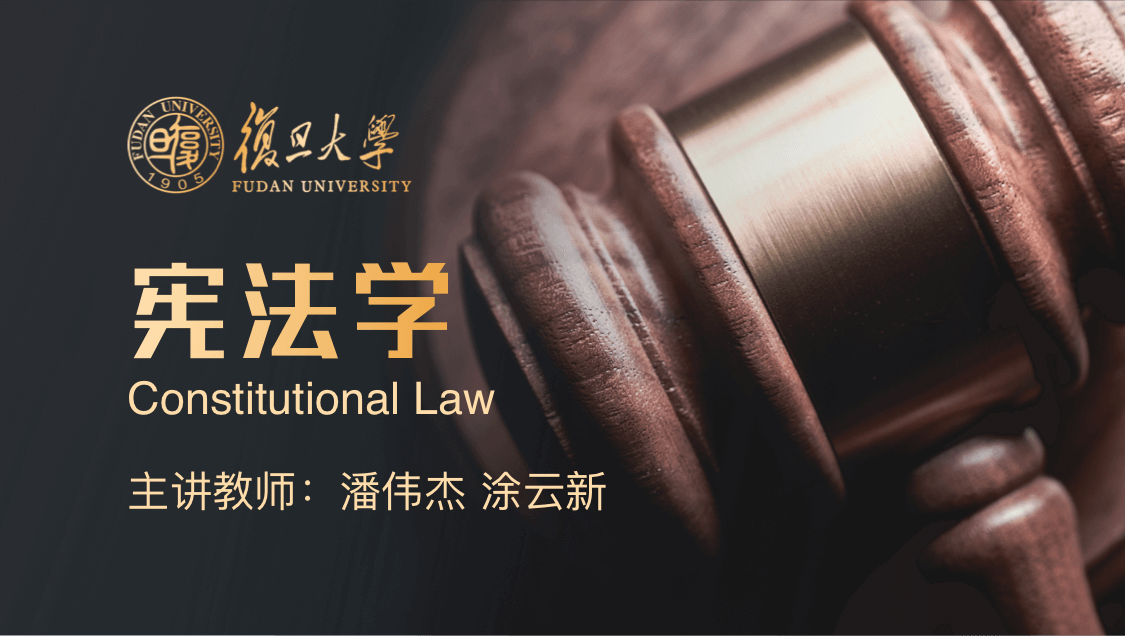
当前课程知识点:Fundamentals of Inorganic Materials Science > 9 Sintering > 9.4 Liquid phase sintering > 9.4.2 Solution-Precipitation mass transfer
返回《Fundamentals of Inorganic Materials Science》慕课在线视频课程列表
返回《Fundamentals of Inorganic Materials Science》慕课在线视频列表
最后,我们来讨论溶解-沉淀传质。
这种传质发生的条件是
液相含量较多、
固体在液相内必须有显著的可溶性,
而且液相和固相可以很好地润湿。
那么这种传质指的是,
在烧结过程中,
当固相在液相中有可溶性,
这时部分固相溶解,
而在另一部分固相上沉积,
直到晶粒长大和获得致密的烧结体。
这种传质过程的推动力是什么呢?
由于液相润湿固相,
每个颗粒之间的空间都组成了一系列的毛细管。
表面张力以毛细管力的方式把颗粒紧紧拉在一起,
毛细管中的熔体起着
把分散在其中的固态颗粒结合起来的作用。
实验证明,
微米级颗粒之间约有0.1-l μm直径的毛细管,
如果其中充满硅酸盐液相,
毛细管压力达1.23-12.3MPa。
由此可见,
由此可见,
毛细管压力所造成的烧结推动力是非常大的。
溶解-沉淀传质的整个过程,
可以分为两个阶段,
首先是颗粒重排,
然后再发生溶解-沉淀传质。
第一阶段:颗粒重排。
随着烧结温度的升高,
会出现足够量的液相。
分散在液相中的固体颗粒,
在毛细管力的作用下,
就会发生相对移动而进行重新排列,
结果得到了更紧密的堆积。
因此对于颗粒重排过程,
坯体致密度的大小取决于液体的数量。
如果液相数量不足,
则液相既不能完全包围颗粒,
也不能填充粒子间空隙。
第二阶段就是溶解-沉淀传质过程。
紧密堆积的颗粒之间有一层液膜。
液膜越薄,
凹面的半径就越小,
颗粒所受到的压力也就越大。
由于压应力的作用,
颗粒之间接触点处的溶解度提高,
这样接触处的固相物质和小颗粒
就不断的会溶解在液相里边,
然后通过液相的传质运输,
会沉淀在较大的颗粒表面,
促使晶粒长大。
在这阶段可粗略地认为,
致密化速率是与粘性流动相应,
线收缩与时间呈线性关系。
由此也可以得到影响收缩率的因素。
首先,收缩率与时间的1/3次方成正比。
其次颗粒半径r越小,收缩率越大。
这一点我们从能量的角度也可以分析,
颗粒越小,推动力越大。
第3个影响因素是粉末特性。
既然是溶解-沉淀传质,
那它的溶解度有多少?
液体和固体之间的润湿性如何?
第4个是液相的数量,
液相数量越多,
传质的速度也就越快。
第5个是烧结温度,
烧结温度越高,
液相粘度越小,
那质点的传质也会加快。
到此为止,烧结的四种传质机理已经全部讨论完了。
那我们把这4种传质机理,
从产生的原因、条件、特点、
动力学方程及工艺控制五个方面进行了分析比较。
从对固相烧结
和液相烧结传质机理的讨论可以看出,
烧结无疑是一个很复杂的过程。
前面的讨论主要是限于
单元纯固态烧结或纯液相烧结,
并假定在高温下不发生固相反应,
此外,在作烧结动力学分析时,
是以十分简单的两颗粒圆球模型为基础。
这样就把问题简化了许多。
但从实际制造材料的角度看,
问题常常要复杂得多。
经常是几种可能的传质机理在互相的起作用,
有时是一种机理起主导作用,
有时又是几种机理同时出现,
有时条件改变了传质方式也随之变化。
比如说对于氧化铍的烧结,
气氛中的水汽就是一个重要的因素。
在干燥气氛中,
扩散是主要的传质方式。
当气氛中水汽分压很高的时候,
则蒸发-凝聚变成传质主导方式。
又例如长石瓷和滑石瓷
都是有液相参与的烧结。
随着烧结的进行,
往往是几种传质交替发生。
总之,烧结体在高温下的变化是很复杂的,
发生典型的传质方式都是有一定条件的。
因此,为了真正掌握和控制整个烧结过程,
必须对烧结全过程的各个方面都有充分的了解。
-Test for chapter 1
-2.1 Type of defect
-2.2.1 The expression methods of point defects
--2.2.1 The expression methods of point defects
--2.2.1 The expression methods of point defects
-2.2.2 The rules for writing of defect reaction equation
--2.2.2 The rules for writing of defect reaction equation
--2.2.2 The rules for writing of defect reaction equation
-2.3 Calculation of thermal defect concentration
--2.3 Calculation of thermal defect concentration
--2.3 Calculation of thermal defect concentration
-2.4 Non-stoichiometric compounds
--2.4 Non-stoichiometric compounds
--2.4 Non-stoichiometric compounds
-Homework for chapter 2
-Test for chapter 2
-3.1 The classification of solid solutions
--3.1 The classification of solid solutions
--3.1 The classification of solid solutions
-3.2 Substitutional solid solution
--3.2 Substitutional solid solution
--3.2 Substitutional solid solution
-3.3 Interstitial solid solution
--3.3 Interstitial solid solution
--3.3 Interstitial solid solution
-3.4 The research method of solid solutions
--3.4 The research method of solid solutions
--3.4 The research method of solid solutions
-3.5 Questions for crystal imperfection and solid solution
--Questions for crystal imperfection and solid solution
-Homework for chapter 3
-Test for chapter 3
-4.1 Melt structure
-4.2 The properties of the melt
--4.2.1 The properties of the melt_viscosity
--4.2.2 The properties of the melt_surface tension
--4.2 The properties of the melt
-4.3 The characteristics of glass
--4.3 The characteristics of glass
--4.3 The characteristics of glass
-4.4 The formation of glass
--4.4.1 The formation of glass_kinetics conditions
--4.4.2 The formation of glass_crystal chemical conditions
-4.5 The structure of glass
-4.6 The typical glass
-4.7 Questions for melt and glass
--Questions for melt and glass
-Test for chapter 4
-5.1 Phase equilibrium in silicate systems
--5.1 Phase equilibrium in silicate system
--5.1 Phase equilibrium in silicate system
-5.2 One-component system phase diagram
--5.2 One-component system phase diagram
--5.2 One-component system phase diagram
-5.3 Applications of one-component diagrams
--5.3 Applications of one-component diagrams
--5.3 Applications of one-component diagrams
-5.4 Binary diagrams
--5.4.1 Binary diagram with eutectic point
--5.4.2 Binary system with a congruent melting compound and one with an incongruent melting compound
--5.4.3 Other five types of phase diagrams of binary systems
-5.5 Applications of binary phase diagrams
--5.5 Applications of binary phase diagrams
--5.5 Applications of binary phase diagrams
-5.6 Ternary diagrams
--5.6.1 Representation of ternary system composition
--5.6.1 Representation of ternary system composition
--5.6.2 Three-dimensional state diagram and plane projection diagram of a simple ternary system
--5.6.2 Three-dimensional state diagram and plane projection diagram of a simple ternary system
--5.6.3 (1) Basic types of ternary phase diagrams
--5.6.3 (2) Basic types of ternary phase diagrams
--5.6.3 (3) Basic types of ternary phase diagrams
--5.6.3 Basic types of ternary phase diagrams
-5.7 Applications of ternary phase diagrams
--5.7 Applications of ternary phase diagrams
--5.7 Applications of ternary phase diagrams
-5.8 Research methods of phase equilibrium
--5.8 Research methods of phase equilibrium
--5.8 Research methods of phase equilibrium
-5.9 Questions for phase equilibria
--Questions for phase equilibria
-Homework for chaper 5
-Test for chapter 5
-6.1 Overview of diffusion
-6.2 The kinetic equations of diffusion
--6.2 The kinetic equations of diffusion
--6.2 The kinetic equations of diffusion
-6.3 The thermodynamic equation of diffusion
--6.3 The thermodynamic equation of diffusion
--6.3 The thermodynamic equation of diffusion
-6.4 Diffusion mechanisms and diffusion coefficient
--6.4 Diffusion mechanisms and diffusion coefficient
--6.4 Diffusion mechanisms and diffusion coefficient
-6.5 Diffusion in solid
-6.6 Factors affecting diffusion
--6.6 Factors affecting diffusion
--6.6 Factors affecting diffusion
-6.7 Questions for diffusion
-Homework for chaper 6
-Test for chapter 6
-7.1 Overview of solid state reactions
--7.1 Overview of solid state reactions
--7.1 Overview of solid state reactions
-7.2 Kinetic equation of solid state reaction
--7.2 Kinetic equation of solid state reaction
-7.3 Factors affecting the solid state reaction
--7.3 Factors affecting the solid state reaction
--7.3 Factors affecting the solid state reaction
-Homeword for chapter 7
-8.1 The categories of phase transformation
--8.1 The categories of phase transformation
--8.1 The categories of phase transformation
-8.2 Crystallization
--8.2.1 Crystallization thermodynamics
--8.2.2 Crystallization kinetics
-8.3 Phase Separation of glass
--8.3 Phase separation of glass
--8.3 Phase separation of glass
-8.4 Questions for phase transformation
--Questions for phase transformation
-Test for chapter 8
-9.1 Overview of sintering
-9.2 The driving forces and models of sintering
--9.2 The driving forces and models of sintering
--9.2 The driving forces and models of sintering
-9.3 Solid state sintering
--9.3.1 Evaporation-Condensation mass transfer
--9.3.2 Diffusion mass transfer
-9.4 Liquid phase sintering
--9.4.2 Solution-Precipitation mass transfer
-9.5 Grain growth and secondary recrystallization
--9.5.2 Secondary recrystallization
--9.5 Grain growth and secondary recrystallization
-9.6 Factors affecting sintering
--9.6 Factors affecting sintering
--9.6 Factors affecting sintering
-9.7 Questions for sintering
-Homework for chapter 9
-Test for chapter 9




